Essays and Articles:
O Terremoto Financeiro: A primeira crise global do Século XXI. [Financial Earthquake: The first global crisis of the 21st Century.] Preface by Armínio Fraga. Rio de Janeiro: Elsevier/Campus, 2009.
A Reforma Educacional de Nova York: Possibilidades para o Brasil. With Patrícia Mota Guedes. São Paulo: Itaú Social/Fernand Braudel Institute of World Economics, 2009.
Qualidade na Educação: A luta por melhores escolas em São Paulo e Nova York. (with Patrícia Mota Guedes) São Paulo: Editora Moderna, 2007. Product of field research in New York to discover strategies for improving Brazilian public education.
Lula e Mefistófeles e outros ensaios políticos. São Paulo: Editora A Girafa, 2005. A collection in Portuguese of recent Braudel Papers.
Strategic and Political Dimensions of the Brazil-Bolivia Gas Pipeline Project. Areport to Technoplan, São Paulo. April 1993.
The Death Threat. Analysis of the Latin American cholera epidemic of 1991-92, a warning of deterioration of survival systems under the impacts of rapid urbanization and growth of adult population. While recent cholera death/case ratios have been a fraction of those in the 19th Century pandemics, the new epidemic shows that the low mortality levels achieved in recent decades may be endangered by decapitalization linked to chronic inflation, reducing the institutional capacity of communities and nations to operate complex societies. This study is part of the research program on Chronic Inflation as Systemic Failure: Latin America and the Polarization of the World Economy of theFernand Braudel Institute of World Economics (1992).
[Electrical Energy and Chronic Inflation in Brazil: Decapitalization of the State Enterprises.] Energia Elétrica e Inflação Crônica no Brasil: A Descapitalização das Empresas Estatais. With Diomedes Christodoulou and Roberto Hukai. São Paulo: Fernand Braudel Institute of World Economics (1990). A detailed study, sponsored by the Ford Foundation, of the threat of electricity shortages in Brazil under the long-term impact of chronic inflation.
Chronic Inflation as Systemic Failure. A report to the World Bank on long-term impacts of chronic inflation on institutions, infrastructure and the survival of complex societies.
El Alto de La Paz: A Report to the World Bank on the Origins and Prospects of Poverty in Bolivia. (1985) A 30,000-word study of the growth of La Paz into a giant peasant market, examining how an urban society relapses into ruralism and becomes increasingly dependent on foreign food donations for survival. Lengthy appendix presents detailed taped interviews with individual survivors illustrating modes of survival during the 1984-85 hyperinflation.
The Political Economy of Petrobras: Petroleum and Economic Development in Brazil. (1985) A 25,000-word report to the ILO/Norway project, United Nations, on the impact of recent oil industry developments on economic development, focusing on offshore oil, transfers of production technology to Brazil and the radical interfuel substitution now taking place to reduce consumption of refined products.
Argentine Inflation: When Will It Stop? (1979) A 40,000-word report to Exxon (Esso Interamerica) on the roots and prospects of Argentina’s inflationary crisis, looking backward to problems arising from credit flows and public finance in the late 19th Century and the adverse movements in the terms of Argentina’s foreign trade that began after the First World War.
La Reforma Educativa Peruana, Lima: Mosca Azul Editores, 1976 (in Spanish). A study of Peru’s educational expansion in this century and its political and economic implications. Original English version published in book form as Peru’s Education Reform. Part I: More Schools. Part II: Escape from Poverty. Part III: Dialogue of the Deaf. Part IV: “A Social Democracy of Full Participation”, American Universities Field Staff Reports, 1974. America Latina: “El Pueblo de Dios.” Caracas: Monte Avila Editores, 1971 (in Spanish). Analysis of revolutionary movements in Latin American Catholicism.
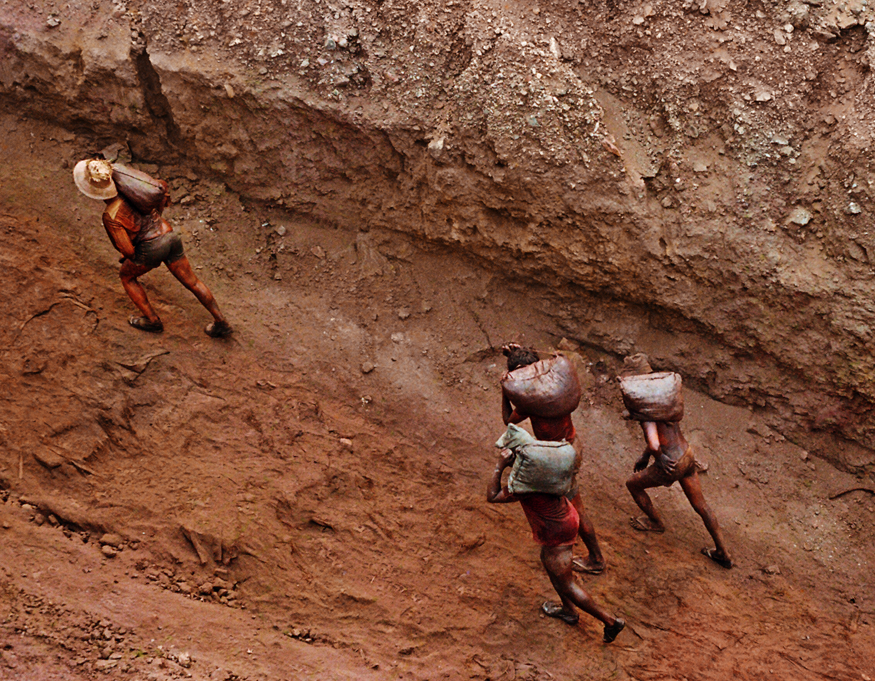
World Economy and Latin America (General):
“Water in China: ‘To fight for every drop of water or die’,” Braudel Papers. No. 46/2012. China’s growing water shortages may impact its growth and stability, weakening its thrust as a global power as it embarks upon an assertive role in world affairs for the first time in its millennial history as a unified state. Based on six weeks of field research in China.
“Millions, Billions, Trillions: Recession or depression?”, Braudel Papers. No. 43/2009.
“Money, Greed, Technology: Financial assets and the world economy,” Braudel Papers. No.42/2008. Analysis of the causes and consequences of the wolrldwide proliferation of financial assets.
“O Obama desconhecido,” (The Unknown Obama), O Estado de São Paulo. May 30, 2008.
The Forgotten Progress of Latin America. “El Olvidado Progreso de América Latina”, El País (Madrid), January 19, 2008.
“Is Democracy Threatened?: Latin America´s struggling institutions,” Braudel Papers. No. 34 (2004). Special edition published in English, Spanish and Portuguese for the international conference on “The Future of Democracy in Latin America,” São Paulo and Brasília, March 2004.
“What is federalism?”, with Marcos Mendes, Braudel Papers No. 23 (2000).
“Money, Greed Technology. Part 1: Brazil and the Asian Crisis,” Braudel Papers No. 19 (1998); “Part 2: Japan, Russia, Brazil,” Braudel Papers No. 20 (1998). An analysis of the worldwide proliferation of financial assets in recent years as the driving force behind the Asian crisis, overwhelming institutional capacities to manage problems of scale.
“Globalism and Localism: What are the limits of competition and security?” Braudel Papers. No. 16 (1997). With Rubens Ricupero, Secretary-General of UNCTAD (United Nations Conference on Trade and Development), former Finance Minister of Brazil and Honorary President of the Fernand Braudel Institute of World Economics.Analysis of world trends in trade and investment and of institutional blockages to economic integration.
“Corruption and Democracy: Disclosure becomes the decisive weapon,” Braudel Papers No. 13 (1996). With Moisés Naím of the Carnegie Endowment of International Peace, Washington. Analysis of the historical roots of corruption and of political, economic and technological trends breeding the current wave of scandals worldwide.
“Wrecking the public sector: What went wrong in in Latin America,” a review-essay on An Economic History of Latin America since Independence byVictor Bulmer-Thomas. The Times Literary Supplment, London. January 26, 1996.
“The Political Economy of Regeneration,” Braudel Papers. No. 7 (1994). Resurgent mortality threatens decapitalized complex societies. Comments on Tarun Dutt’s “The Revival of Calcutta: The stubborn pursuit of survival under threat of catastrophe” and Shane Hunt’s “Lima Emerges from Hyperinflation and Violence,” both published in the same issue. These experiences generate hopeful messages that collapse can be avoided in cities suffering from overload and fatigue. These messages imply that cities can develop a political economy of regeneration to reverse disorder and decline. The elements of this political economy of regeneration are: (1) balanced fiscal accounts; (2) credible government; (3) cooperation between political and business leaders; (4) responsible social policies and (5) international support.
“Without stability there is no salvation,” Braudel Papers. No. 5 (1994). Comments on trade regimes and political stability, referring to Rubens Ricupero’s essay on “Trade, Power and the Future,” published in the same issue.
"Politics and Markets," a 10,000-word dialogue with Professor Jeffrey Sachs of Harvard University on economic reform, Braudel Papers . São Paulo: Fernand Braudel Institute of World Economics, March-April 1993, in English and Portuguese editions. Shorter version published in O Estado de São Paulo . Sunday, March 7, 1993.
"Modernity," Commentary. July 1992. A review essay on Paul Johnson's The Birth of the Modern: World Society, 1815-1830, discussing the meaning of modernityas displayed in its great surge after the Napoleonic Wars.
["Lessons from Peru and Venezuela"] "Lições que vêm do Peru e da Venezuela", O Estado de São Paulo, Sunday, May 3, 1992. Full-page article in Portuguese on the implications of the failed military coup in Venezuela and the purges of Congress and the Judiciary announced by President Alberto Fujimori in Peru. It argues that decapitalization threatens reversion of some populations to more archaic forms of civilization and mortality. This threat of regression is driving a shift in the politics of nations from a political economy of entitlements, or acquired rights, toward a political economy of survival. The shift is only beginning and its effects have not come fully into view. Spanish version in El Nacional, Caracas, June 4, 1992.
"Shunning Map to Prosperity, Vast Nations Take the Low Road, "The Wall Street Journal (editorial page). May 31, 1989. Overview of the polarization of the world economy. Portuguese versions published in Gazeta Mercantil (São Paulo) June 7, 1990 and Jornal da Tarde (São Paulo) September 2, 1989.
"A Nova Era da Economia Mundial," in Norman Gall and Werner Loewenberg, A Nova Era da Economia Mundial. Proceedings of the inaugural conference of the Fernand Braudel Institute of World Economics. São Paulo: Editora Pioneira 1989.
“Does anyone really believe in free trade?” (cover story), Forbes. December 15, 1986. “Through gift, theft and license, our technology is leaking abroad almost as fast as we develop it. So scratch the long-term dream of a U.S. living off exports of high technology goods and services.” Focusing on the trade conflict over Brazil’s new computer industry.
“What Ails the Developing Economies?” (cover story), Forbes, July 28, 1986. Focusing on the distressing examples of Peru, Argentina, Mexico and some African countries, this analysis, based on many years of first-hand reporting, blames excessive urbanization for the crippling of many Third World economies, forcing them to concentrate resources on sustaining unproductive city populations and reducing possibilities of both capital-formation and adapting to changes in the world economy. Spanish version published in El Diario de Caracas (Venezuela), August 24, 1986. Complete original version published as four-part series, Jornal da Tarde, January 26-30, 1987.
“We are living off our capital,” Forbes. September 22, 1986. How fast is the world running out of oil? Geologist Joseph Riva, author of World Petroleum Resources and Reserves, predicts in a taped interview that the Middle East, if not crippled by political disturbances, will compensate for production declines elsewhere by raising its share from 20% today to 50% by 2005 and 75% by 2020, after which world output will start to fall.
“The Dollar: Too Strong for Our Own Good” (cover story), Forbes, February 28, 1983. Taped interview with Martin Feldstein, chairman of President Reagan’s Council of Economic Advisers, on the world crisis in public finance, with U.S. budget deficits driving up interest rates that artificially strengthen the dollar, leading to huge deficits in foreign trade and transformation of the U.S. into a debtor nation.
“Joseph Schumpeter: The 20th Century’s Greatest Economist” (cover story, with Peter Drucker and James W. Michaels), Forbes, May 23, 1983. In the centenary year of both Schumpeter and John Maynard Keynes, Forbes analyzes the work of both men and finds that Schumpeter’s “Wagnerian vision” of business cycles and “creative destruction” more accurately describes an open and dynamic world economy.
“The World Gasps for Liquidity” (cover story), Forbes, October 11, 1982. An overview of the world banking and credit crisis in the light of Mexico’s 1982 suspension of payments on its foreign debt and nationalization of its private banks.
“Volkswagen’s Dilemma: Is There Another Rabbit in the Hat?” (cover story), Forbes, August 17, 1981. A survey of the crisis in the world automotive industry as experienced by the leader in small-car exports until the Japanese came along, viewing Volkswagen’s operations in Germany and Brazil.
“The good news and the bad,” Forbes, October 12, 1981. Taped interview with Princeton’s Ansley Coale, one of the world’s leading demographers, on the results of the 1980 round of national censuses, which recorded the first decline in the rate of world population growth in two centuries.
“Has Germany caught the American disease?”, Forbes, March 16, 1981. Interpretive essay and “round table” of taped interviews with Economics Minister Otto Lambsdorff, Hermann J. Abs of the Deutsche Bank and Eugen Loderer, head of the powerful I. G. Metall metalworkers’ union. Portuguese version in the Jornal do Brasil (Rio de Janeiro), March 8, 1981.
“It’s later than we think,” Forbes, February 2, 1981. Taped interview with Professor William J. Abernathy of the Harvard Business School, an expert in automotive manufacturing technology, on the nature of the Japanese cost advantage on world car markets.
“Recycling Petrodollars: How Much More Can the System Take?” (cover story), Forbes, June 23, 1980. An analysis of “sovereign risk” international bank lending in the light of the growth of world money aggregates during the 1970s and historical experience, going back to the involvement of the Medici bank in England’s War of the Roses in the 15th Century. Longer Portuguese version published in Jornal do Brasil, June 8, 1980. French version in L’Expansion (Paris), November 7, 1980. Spanish version in Mercado (Buenos Aires), July 31, 1980.
“It’s a moving target, Gentlemen,” Forbes, November 10, 1980. Taped interview with Charles Gray, head of the Environmental Protection Agency laboratory setting automotive safety, pollution and mileage standards, predicting a further slide in the competitiveness of the U.S. car industry if greater design innovations are not forthcoming.
“The economy’s problem: it doesn’t pay to invest,” Forbes, March 19, 1979. Taped interview with one of the world’s leading development economists, Arthur Lewis of Princeton University. Portuguese version, oriented more toward problems of developing countries, published in Jornal do Brasil (Caderno Especial), December 17, 1979.
"A Cheerleader’s Report: Guerrilla Movements in Latin America,” The New York Times Book Review, March 28, 1971. A review of Richard Gott’s book.
"Latin America: The Church Militant,” Commentary, April 1970. Somewhat different Spanish and German versions have appeared in Mundo Nuevo (Paris-Buenos Aires) No. 48, June 1970 and in Monat (Frankfurt) August 1970. An essay on the revolutionary and post-Conciliar movements in Latin American Catholicism. A greatly expanded version of this essay, together with an earlier report on the Catholic Church in revolutionary Cuba (The New Leader, September 14, 1964), appears as a book in Spanish, America Latina: “El Pueblo de Dios”, published by Monte Avila Editores, Caracas, January 1971.
“The Failure of the Revolution and the Death of the Revolutionist”, The New York Times Book Review, July 27, 1969. Review of two books on the circumstances of Che Guevara’s defeat and death.
“Rockefeller’s Unfortunate Trip South,” The World Street Journal, (editorial page), June 12, 1969. Political commentary.
“Guerrilla Saint”, (not my title), The New York Times Book Review, May 5, 1968. A critical appraisal of Che Guevara’s political writings.
“The Legacy of Che Guevara,” Commentary, December 1967. French version published in Esprit (Paris), September 1969. Book version published in Bruce Mazlish et. al., eds., Revolution. New York: Macmillan, 1971. A survey of the failure of the Castroite rural guerrilla movements in the 1960s in Latin America, culminating in Che Guevara’s death in Bolivia.
“Revolution without Revolutionaries,” The Nation. August 22, 1966. Based on first-hand reporting on guerrilla movements in Latin America in 1965-66.
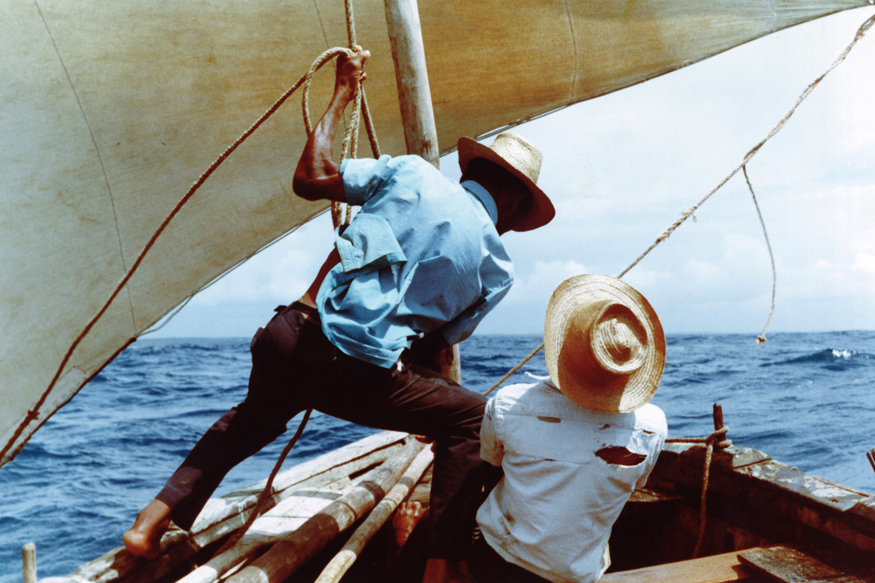
Brazil:
“Oil in Deep Waters: Will offshore discoveries change the course of Brazil’s development?” Braudel Papers. No. 45 (2011). In English and Portuguese.
“Oil in Deep Waters.” A five-part series of monthly Sunday articles for O Estado de São Paulo, Brazil’s leading newspaper, on the challenges posed by giant petroleum discoveries at great ocean depths in the South Atlantic. January-June 2011.
“Lulinha, paz e amor,” El País (Spain). October 15, 2010. “If Shakespeare were alive today, he might have written that Luiz Inácio Lula da Silva, like Julius Caesar, bestrides the narrow world of Brazilian politics like a colossus, as ‘petty men walk under his huge legs to find themselves dishonorable graves’.” Lula’s domination of the 2010 presidential election.
“Oil euphoria puts Lula’s legacy at risk,” Financial Times. August 11, 2010. On the political confusion surrounding deep-water discoveries in the South Atlantic.
“Os Blindados,” O Estado de São Paulo. September 12, 2007. Exaggerated public spending and institutional weaknesses threaten Brazil´s stability in uncertain times for the world economy.
“The Struggle for Better Schools: São Paulo and New York.” A four-part series of Sunday articles in O Estado de São Paulo based on five weeks of research in New York on the Bloomberg-Klein school reform, focusing on the challenge to Brazil´s public education. Published April 29, May 20 (Patricia Guedes), June 17 and July 15, 2007.
“Mending Brazil´s Megacity: For the first time in history, a majority of the world´s population now lives in cities. In the developing world, the names of vast new megacities –Dhaka, Lagos, Calcutta, Jakarta—are synonymous with human misery. But São Paulo is seeking to show that a megacity can work.” The Wilson Quarterly. Summer 2007.
“Educação ou morte: O americano estudioso do Brasil diz que o país é melhor do que se pensa, mas tem desafios cruciais a superar,” São Paulo: Veja magazine, February 1, 2006. Interview by Roberto Pompeu de Toledo. English version available at www.normangall.com .
“Lula and Mephistopheles: Brazil needs a new strategy,” Braudel Papers. No. 37 (2005). Analysis of Brazil´s biggest corruption scandal, calling for a strategic consensus for investment in education and infrastructure to strengthen institutions.
“Lulagate e Watergate,” O Globo. Rio de Janeiro: July 10, 2005.
“Diadema: Frontier violence and civilization in São Paulo´s periphery,” Braudel Papers. No. 36 (2005), with Maryluci de Araújo Farias and Bruno Paes Manso. Analysis of the decline of homicides in one of the world´s most violent communities, involving four years of research and social action by the Fernand Braudel Institute of World Economics.
“Why Lula Won,” analysis of Brazil´s 2002 election. El País (Spain), November 3, 2002; Hindustasn Times (India), November 4, 2002; Caretas (Peru), November 7, 2002.
"Blackout in Energy Policy: Brazil’s difficulties in making decisions,” Braudel Papers. No. 31. (2002). Analysis of the political, regulatory and financial problems contributing to electricity shortages in 2001-02 and their potential consequences.
“Por que abandonamos a escola pública?” [“Why do we neglect public schools?”], O Estado de São Paulo. April 28, 2002. Analysis of the unsolved murder of a school principal and proposals for reducing violence in the schools of Greater São Paulo.
“São Paulo Metropolis: Political Disorganization and Problems of Scale,” Braudel Papers. No. 28 (2001). Analyzes the evolution of the political structure of the giant city, with the fastest long-term growth rate in human experience, and suggests some changes
“São Paulo Symphony: Rebirth of an orchestra as civic beacon,” Braudel Papers. No. 26 (2000).
“The Risks of Unbalanced and Predatory Federalism in Brazil.” With Marcos Mendes. Jornal da Tarde, São Paulo, August 21, 1999.
“The Police: Perverse incentives and public security.” Braudel Papers No. 21 (1999). With José Vicente da Silva. Analysis and policy recommendations to deal with surging crime in Greater São Paulo, the world’s third-largest metropolis, and the paralysis of institutions of public security, reinforced by a culture of perverse incentives that is embedded in parasitism, impunity and bureaucratic privilege.
“Cross roads of transportation: Can Brazil’s roads and ports overcome decades of neglect?” Braudel Papers No. 19 (1997). With José Carlos Mello. Decapitalization of transport infrastructure threatens Brazil’s long-term modernization process. New investment and reorganization from privatization is only part of the answer. Intelligent and effective regulation and increased public investment also are needed to enable Brazil’s ports, highways, railroads and urban transport support broader participation in the world economy.
“King Kong in Brazil: State bankruptcies and bank failures.” Braudel Papers. No. 15 (1996). Special edition. Inflation now is low but the institutions of chronic inflation are alive and making enormous claims on government resources. Since the Real Plan was launched, massive federal support has gone into sustaining operations of five of the 10 biggest banks that were since merged into other institutions or are still in deep trouble, in one of the most complex banking crises in financial history. Brazil’s big trouble now is a spreading cancer of bank failures and state bankruptcy.
“Behind the world’s biggest bank failure: Expensive efforts to rescue Banespa and keep the bank in the hands of the governor of São Paulo are all too typical of a Brazilian political cultiure that presents a clear and present danger to economic progress.”Institutional Investor. September 1996.
“Elastic debts: state bankruptcies threaten Brazil’s Real Plan,” Braudel Papers. No. 12 (1995). With Marcos J. Mendes of the Central Bank of Brazil. Prepared for our international conference on “Rebuilding Public Institutions in São Paulo State,” November 27-29, 1995.
“China and Brazil: Big countries struggle for order and progress,” Braudel Papers. No. 10 (1995). With Fan Gang of the Institute of Economics of the Chinese Academy of Social Sciences, member of the Fernand Braudel Institute of World Economics. Fiscal autonomy and credit-creation in provinces threatens revival of inflation in China and Brazil.
“Social Capital and Inflation in Brazil,” Braudel Papers. No. 9 (1995). The phenomenon of human cooperation remains a mystery. Cooperation is a dynamic process of continuous adaptation, involving a certain cost. We must either accept this cost or deal with the greater hardships of deepening disorder. In Brazil as elsewhere, stability of prices has become critical to political stability. Comments on Robert Putnam’s “Social Capital and Democracy,” published in the same issue.
"Não vai dar em nada?" [Will nothing come of this?], Braudel Papers . São Paulo: Fernand Braudel Institute of World Economics, January-February 1993.
The Floating World of Brazilian Inflation. São Paulo: Fernand Braudel Institute of World Economics, 1992.
"After the Impeachment in Brazil, the Abyss Still Looms,"The Wall Street Journal, October 2, 1992, editorial page. Analysis of the causes and possible consequences of the fall of President Fernando Collor.
“Hyperinflation still threatens Brazil: The German inflation in the eight years from 1914 to 1922 was more moderate than Brazilian inflation from 1980 to 1988.” (“Hiperinflação ainda ameaça o Brasil: A inflação alemã, nos oito anos entre 1914 e 1922, foi mais moderada do que a brasileira, entre 1980 e 1988.”’) First part of a study of The Anatomy of Hyperinflation by the Fernand Braudel Institute of World Economics, published simultaneously in the newspapers Jornal do Brasil (Rio de Janeiro) and O Estado de São Paulo, Sunday February 26, 1989.
“Economia mundial entra em nova era” [“World economy enters new era”], O Estado de Sao Paulo, October 9, 1988. Full-page synthesis of lecture at the inaugural conference of the Fernand Braudel Institute of World Economics, held in Sao Paulo, Brazil, August 31, 1988. Written in Portuguese. English version available.
“Prometheus in Sao Paulo,” a detailed report on the Brazilian computer industry, explaining how the Brazilian government closed its home market as Brazilian entrepreneurs got technology through easy licensing by U.S. companies and ancient methods of technology theft. Full Portuguese version published in Jornal da Tarde, Sao Paulo, December 15-18, 1986. Shorter Portuguese in Jornal do Brasil, Rio de Janeiro, December 14, 1986. Truncated version published as cover story, Forbes, December 15, 1986 (see U.S. and general).
“Don’t push us too far,” Forbes, Feb. 10, 1986. Taped interview with Brazilian Finance Minister Dilson Funaro. “In Brazil, Latin America’s most prosperous debtor country, again there is talk of default. Is the debt crisis about to flare again?”
“Brazil: The Last Gold Rush,” Harper’s Magazine, December 1984. Analysis of Brazil’s big gold rush and potential as a major gold producer, based on extensive field reporting in Amazonia. Compares Brazil’s gold fever today with the rushes of previous centuries around the world, assessing future role of Brazil as a gold supplier in the light of South Africa’s decline. Fuller Portuguese version in Jornal do Brasil, Rio de Janeiro, December 2 & 16, 1984 (Caderno Especial). French version in Perspectives, Paris, February 1985.
“Brazil’s New Gold Rush” (cover story), Forbes, May 21, 1984.
“Crisis Averted?”, Forbes, March 1984. Taped interview with Brazil’s Central Bank president, Affonso Celso Pastore, on the surge of Brazil’s exports in 1984 and his efforts to restructure the credit system and public finances.
“Brazil and the Bankers” (cover story), Forbes, December 5, 1983. Brazil can’t pay the interest or principal on its $90 billion foreign debt. In 1983 interest alone was half of export earnings and 5% of GNP. Unknown to most foreigners, Brazil’s domestic public debt has been mushrooming even faster and has threatened a hyperinflation akin to Germany’s in the 1920s. This article argues that these obligations must be scaled down and that international banks can absorb the shock. Portuguese version published in Jornal da Tarde, Sao Paulo, December 24, 1983.
“Uma falsa saida,” guest column in the Brazilian newsweekly Veja, Sao Paulo, January 4, 1984. Comparison of foreign borrowing by Brazil and the U.S. to cover government deficits.
“The Great Soybean Migration,” Forbes, August 30, 1982. Second part of a cover story on financial and marketing problems of U.S. agriculture, focusing on new soybean supplies pouring onto the world market from South America’s Parana River basin (Brazil, Argentina, Paraguay) amid major structural changes in the grain trade.
“Brothers in misery,” Forbes, April 12, 1982. Report on Poland’s default on its $1.5 billion debt to Brazil, which itself owes $70 billion to foreign banks and governments, analyzing the dynamics of foreign trade and barter among highly leveraged countries.
“Why is inflation so virulent?”, Forbes, October 13, 1980. Taped interview with former Brazilian Finance Minister Octavio Gouvea de Bulhoes, who argues that accelerating world inflation since World War II comes from redistribution of income from business profits into salaries and points to a return to pre-Keynesian economics. Portuguese version published in Jornal do Brasil, October 5, 1980.
“When capitalism and Christianity clash,” Forbes, September 1, 1980. Taped interview with the Cardinal-Archbishop of Sao Paulo, Paulo Evaristo Arns, on revolutionary movements in Catholicism in the light of Pope John Paul II’s teachings during the 1980 papal visit to Brazil. Portuguese version in Jornal do Brasil, July 27, 1980.
“Brazil at the Brink,” Forbes, February 4, 1980. Broad analysis of Brazil’s crisis of debt and inflation as it enters the 1980’s, plus a taped interview with Economic Czar Antonio Delfim Netto.
“Elasticity snaps,” Forbes, April 28, 1980. “The gasoline price in Brazil has tripled since the start of 1979. That has caused strikes and riots, but it also has cut deep into consumption.”
The Twilight of Nuclear Exports: Brazil and Iran. American Universities Field Staff Reports (1979). Analysis of the collapse of the nuclear power programs of Brazil and Iran and its impact on the international reactor industry. Portuguese version published in the Jornal do Brasil. Rio de Janeiro: December 3,1978 (Caderno Especial). Shorter English version, “Nuclear Energy: Trouble in Promised Lands”, published in Forbes. November 27, 1978. Full English version serialized in The Buenos Aires Herald. April 12, 17, 18, 1979.
“Ludwig’s Amazon Empire”, Forbes.. May 14, 1979. Portuguese version published in Jornal do Brasil (Caderno Especial), May 20, 1979. A 7,000 word analysis of Daniel Ludwig’s Jari project, embracing large scale irrigated rice production and forestry-pulp operations, discussing the project’s political problems and its economic and technological implications for tropical South America.
“Brazil and the Defense of the West” (“Ate que ponto os EUA interessam ao Brasil”), Jornal do Brasil. (Caderno Especial). March 4, 1979. Analysis of U.S.-Brazilian relations.
Noah’s Ark: Energy from Biomass in Brazil. American Universities Field Staff Reports (1978). A broad-gauged analysis of Brazil’s rapid energy transition and the opportunities for development of photosynthetic and other biomass fuel supplies, focusing mainly on efforts to substitute alcohol for gasoline. Portuguese version publish in the Brazilian army magazine , A Defesa Nacional. No. 682. March-April 1979. Shorter version published in Jornal do Brasil. (Caderno Especial). September 24, 1978.
Letter from Rondonia: A Report on the Brazilian Frontier, Part I: BR-364. Part II: Strategic Reach. Part III: The Settlers. Part IV: Ridge of the West. Part V: Resource Horizons. A five-part study of human penetration and settlement of the most fertile region of Amazonia, based on field interviews and historical research, with comparisons between the northern and westward expansion of the Brazilian frontier today and the occupation of the American West a century ago. Produced for the Carnegie Endowment for International Peace, 1977. Published by American Universities Field Staff Reports, 1978. Portuguese version serialized in O Estado de Sao Paulo (four Sundays), February 26 and March 5, 12, 19, 1978.
In the Name of Democracy: Brazil’s Presidential Succession. American Universities Field Staff Reports, 1978. The emergence of the chief of Brazil’s National Intelligence Service, General Joao Baptista de Oliveira Figueiredo, as the personal choice of outgoing President Ernesto Geisel (1974-1979) to be the new President, provokes crisis and controversy in the military-political system.
“The Rise of Brazil”, Commentary. January 1977. An 11,000-word analysis of the forces behind the emergence of Brazil as an important country and the spread of dictatorship in Latin America. Portuguese versions published in O Estado de São Paulo, March 13, 20, 1977 and in the military magazine A Defesa Nacional, No. 674 (1978). Spanish version serialized in Equis X (Lima), February 9 and March 9, 1977. German version in Berichte (Munich), March-April 1978.
“Atoms for Brazil, Dangers for All”, 17,000-word essay on the Brazil-German nuclear deal, published concurrently in Foreign Policy (23) and Bulletin of the Atomic Scientists (June 1976). Portuguese versions published in O Estado de Sao Paulo, June 13, 20, 1976 (consecutive Sundays) and by the Fundacao Getulio Vargas, March 1977, in the book entitled As Multinacionais e o Brasil. Spanish versions in Resumen (Caracas), June 20, 1976; Estrategia (42) (Buenos Aires), September-October 1976 (special issue on nuclear policy), and in Presencia (La Paz) serialized successive Sundays, August-September 1976. French version in Esprit (Paris), December 1976. Dutch version in Intermediair, October 15, 1976. Italian version published in Revista d i Studi Politici Internazionali (Florence).
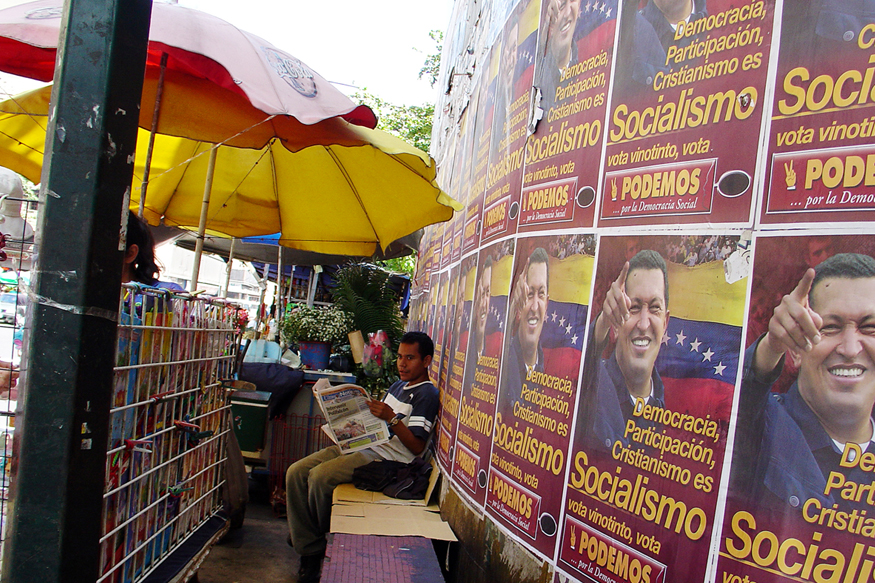
Venezuela:
“After Chávez,” analysis of the polarization and prospects of Venezuela after 14 years of the “Bolivarian Revolution.” The Globe and Mail (Toronto), February 20, 2013. O Estado de São Paulo, February 17, 2013. O Globo, Rio de Janeiro, January 27, 2013.
“Oil and Democracy in Venezuela. Part 1: Why Chávez? Part 2: The Bolivarian Revolution. Braudel Papers Nos. 39 & 40 (2006). Versions also in Spanish and Portuguese. The causes and consequences of the rise of Hugo Chávez in the long-term thrust of Venezuelan development.
“La dudosa obra de Chávez” and “El caos petrolero,” two-part series in El País. Madrid: March 27 & 28, 2006. Reproduced on Venezuelan websites www.noticiadigital.com and www.soberania.com.
Three full-page Sunday articles in O Estado de São Paulo on the Chávez regime in Venezuela: “Chávez sobreviverá à desordem?, January 22, 2006; “O estilo Chávez de governar,” January 29, 2006; “Desordem venezuelana afeta petróleo,” February 5, 2006. English originals accessible on website www.normangall.com .
“High oil prices are good for everyone,” Forbes, January 19, 1981. Taped interview with Venezuelan Oil Minister Humberto Calderon Berti, published together with OPEC document on strategy for the 1980’s.
“The Challenge of Venezuelan Oil”, Foreign Policy. No. 18, Spring 1975. Spanish version published in Resumen, Caracas, March 30, 1975; Portuguese version published in Opiniao, Rio de Janeiro, in three installments, March 14, 21, 28, 1975. The politics of nationalization and implications for the U.S. and world economy.
“Orinoco Oil: Big Cost vs. Big Demand”, The New York Times, Sunday, March 17, 1974, p. F16 (financial section). Spanish version published in El Nacional, Caracas, March 24, 1974, p. A6.
“Changing of the Guard in Venezuela”, The Wall Street Journal, January 3, 1974 (editorial page). Election analysis.
“Carnival in Caracas”, The New York Review of Books, November 15, 1973. An overview of Venezuela politics and society on the eve of the 1973 elections.
Oil and Democracy in Venezuela. Part I: “Sowing the Petroleum”, American Universities Field Staff Reports, East Coast South American Series, Vol. XVII No. 1, 1973. An analysis of Venezuela’s increasing dependence on oil income despite a widely publicized public investment program to “sow the petroleum” for diversification of the economy.
Oil and Democracy in Venezuela. Part II: “The Marginal Man”. American Universities Field Staff Reports, East Coast South American Series, Vol. XVII No. 2, 1973. A view of the structural factors in Venezuelan society tending to undermine political stability and impeding the rational use of oil revenues.
“L’ecrivain colombian Garcia Marquez Fait don du prix Romulo-Gallegos a une formation l’extreme gauche”, Le Monde, September 9, 1972.
Teodoro Petkoff: The Crisis of the Professional Revolutionary. Part I: Years of Insurrection. Part II: A New Party, American Universities Field Staff Reports, 1972-3. Edited translation of 20 hours of taped interviews with a leader of Venezuela’s guerrilla movement and Communist Party on the inner life of these movements.
Venezuela: Los Indocumentados Colombianos, American Universities Field Staff Reports, 1972. Spanish version published in the Jesuit magazine, SIC, Caracas, February 1972. An essay analyzing the economic and demographic factors in the clandestine immigration of Colombians into Venezuela. Based on a month of interviews in western Venezuela and Colombia.
“Venezuela: La revolte grandissante de la jeunesse inquiete les authorites”, Le Monde, April 28, 1971.
“A Landmark Election for Venezuela”, The Wall Street Journal, (editorial page), December 17, 1968. Analysis of Raphael Caldera’s victory in the 1968 election.
“Guevara Legacy: Castroite Rebels in Latin America Find Troubles Deepening”, The Wall Street Journal, (editorial page), October 27, 1967. Also, Die Zeit, Hamburg. With emphasis on Castro’s feud with the Venezuelan Communist Party.
“Last Flickerings of the Armed Struggle?” The Economist, September 30, 1967. Destruction of the FALN’S “Strategic Sabotage Command” in Caracas, amid internal dissention.
“War for the Stunted Peons”, The Economist, August 7, 1965. The army’s offensive against the guerrillas in western Venezuela based on a revisit to the guerrilla zone.
“Venezuela’s Guerrillas”, New Statesman, April 16, 1965.
“Venezuela and the Continental Revolution”, The New Leader, April 12, 1965; also in The Congressional Record, Senate, April 28, 1965, p. 8513. First reports from guerrilla zone on spreading insurgency, based on a four-week visit to Venezuela for The Washington Post, December 1964- January 1965, six articles.
“Terror Fails to Halt Venezuelan Vote: Leoni Vows to Curb Fidelistas,” The San Juan Star. December 2, 1963. Coverage of Venezuelan presidential election and interview with victorious candidate Raul Leoni.
“Venezuela’s Social Christians,” The San Juan Star. December 7, 1963. Interview with COPEI leader Rafael Caldera and analysis of the party’s prospects.
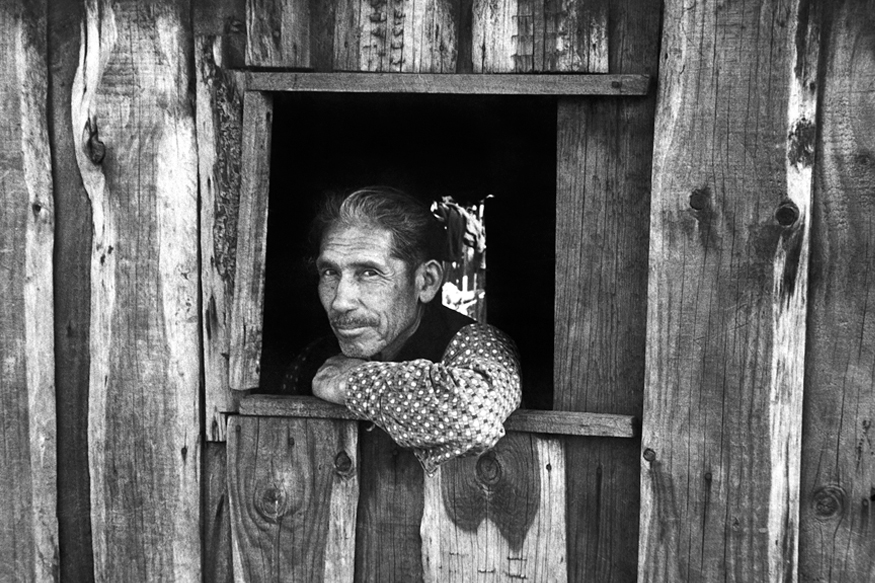
Japan:
“The Japanese strategy for computer supremacy,” Forbes, February 9, 1987. Taped interview with MIT’s Charles Ferguson, who predicts that big Japanese electronics combines are destroying the U.S. merchant semiconductor industry and are gaining a critical competitive advantage through domination of capital equipment production. He argues that the atomized structure of the U.S. industry facilitates technology giveaways through promiscuous licensing by financially-weak U.S. companies. The critical advantage being gained by the Japanese in semiconductors will give them leadership in computers as well.
“Hold the champagne,” Forbes, May 5, 1986. Impact of the high yen on the domestic Japanese economy. Public finance, not trade, is now the main economic issue between Japan and the United States. Based on a month’s reporting in Japan.
“A yen to spend,” Forbes, May 19, 1986. Back-country reporting in the snow country of northern Japan to depict Japan’s public finance problems and the difficulties of further stimulating the economy to divert demand away from exports.
“The Rise and Decline of Industrial Japan,” Commentary. October 1983. Analysis of Japan’s early development, paralleling pre-industrial Europe, and of the maturing of its modern economy, examining the implications of its crisis in public finance, the aging of its work force, the opening of its economy to more imports and the structural difficulties of certain key industries. French version published in Perspectives (Paris), March 1984. Portuguese version published in Jornal da Tarde (Sao Paulo), April 21, 1984.
“Japan Inc.: And Now the Bad News” (cover story), Forbes, January 31, 1983. Based on three months’ travel in Japan. Sees growing distortions in Japan’s economy, especially high consumption in unproductive but politically important rural areas, and anticipates difficulty in sustaining lifetime employment system because of stagnating export opportunities for flagship companies.
“Japan: The Next Great Creditor Nation,” Forbes, February 14, 1983. Analysis of the opening of Japan’s capital market, the largest outside the U.S. “Instead of importing more goods, Japan is going to export more capital. That’s the road Britain took a century ago, and it has the Japanese frightened half to death.”
“Close the door, they come in the window,” Forbes, February 15, 1982. View of the export strategy of the Japanese consumer electronics industry, seen in a visit to a Sanyo color television assembly plant in Tierra del Fuego, at the edge of Antarctica in the extreme south of Argentina.
“Innovate or Die,” Forbes, November 9, 1981. Taped interview with Saburo Okita, Japan’s leading economic planner and former foreign minister, on Japan’s role in world trade in the 1980s.
.jpg)
Mexico:
“Can Mexico Pull Through?” (cover story), Forbes, August 15, 1983. Mexico is a nation of 75 million people (soon to become 100 million) that has lots of oil but little water, spawning more and more disequilibrium between population and resources, especially in the arid central highlands, where three-fourths of Mexico’s people are concentrated. Mexico’s chronic water shortage threatens to limit further economic development and to greatly decrease its self-sufficiency in food production. Includes edited translation of a one-hour taped interview with President Miguel de la Madrid. Portuguese version in Jornal da Tarde, Sao Paulo, January 28, 1984.
“The World Gasps for Liquidity” (cover story), Forbes, October 11, 1982. Overview of the world banking and credit crisis in the light of Mexico’s 1982 payments suspension and nationalization of private banks.
“Border-line Poverty: 2,000 miles of U.S.-Mexican Woes,” The National Catholic Reporter, May 10, 1967. Report on social tensions in Ciudad Juarez, Mexico, caused by the closing of the U.S. frontier to Mexican migrant labor and by aggravation of Mexico’s chronic land hunger; includes interview with ex-President Lazaro Cardenas in the hill country of Oaxaca state.
“Uncle Sam’s Other Neighbor,” The Toronto Star, April 1967. Four-part series on Mexican economic nationalism, focusing on differing Mexican and U.S. attitudes toward U.S. investments.
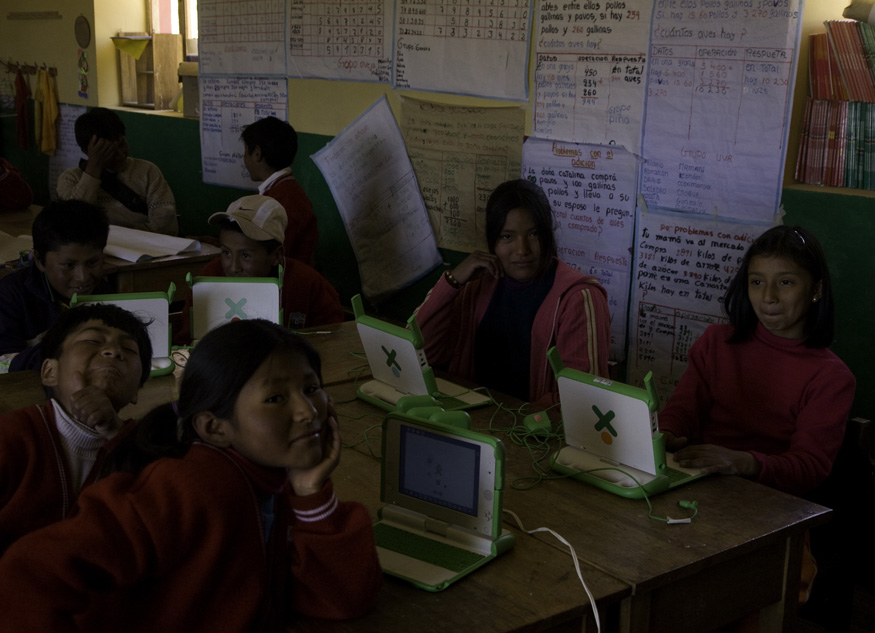
Argentina:
“Argentina: Whistling Past the Graveyard,” Forbes, June 21, 1982. Excerpt from a longer unpublished essay,”The Pyramid of Credit,” analyzing Argentina’s banking crisis of 1980-82 in the light of excessive world credit expansion over the past decade and differences in foreign lending between the 1970’s and Argentina’s high-growth decades (1880-1914).
“Paco Capozzolo: The Man Who Tried to Buy the Falklands,” Forbes, July 5, 1982. Profile and taped interview portraying a leading Argentine financial and land speculator who made a fortune in the postwar decades by betting heavily on inflation and negative interest rates. Describes Capozzolo’s efforts to buy the Falkland Islands Company in 1977 behind a screen of French and British “partners.”
“What went wrong with Argentina?”, Forbes, March 1, 1982. Spanish version published in Mercado (Buenos Aires), March 18, 1982. Taped interview with Economics Minister Roberto Alemann, who tries to explain the reasons for Argentina’s economic decline since World War II.
Argentine Inflation: Why Doesn’t It Stop? (Unpublished , August 1979). A consulting report to Exxon based on a six-month study of the historic roots and prospects of Argentina’s inflation, going back to landowners’ currency manipulations in the nineteenth century and the deterioration of Argentina’s terms of international trade since 1920 and its impact on highly urbanized society formed by immigrants.
“El Retorno of Juan Peron”, The Washington Post, December, 1964. Five articles form Buenos Aires on the crisis within Peronismo aggravated by ex-Dictator Juan Peron’s humiliating detention in Rio de Janeiro while attempting to return to Argentina.
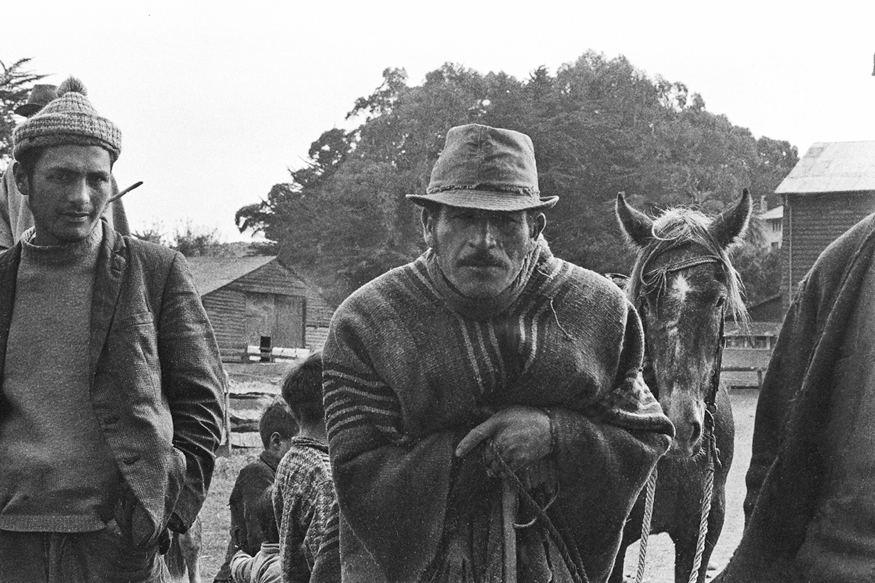
Chile:
“Cracked showcase,” Forbes, December 7, 1981. “Chile’s economy, held up as a beacon of University of Chicago monetarism, enjoyed a boom on other people’s money—and is paying for it now.” Chile’s banking crisis forces the central bank to assume control of many private banks.
“How the Chicago Boys Fought 1,000% Inflation.” Chile’s critics say that bayonets lowered inflation there. Disinterested experts point to monetary policy. But University of Chicago economist Arnold Harberger argues the real weapons used by his former pupils were fierce cuts in government spending and tariffs. Forbes, March 31, 1980. Taped interview with Arnold Harberger. Longer Portuguese version published in Jornal do Brasil, (Caderno Especial), August 24, 1980.
“Chile: Hard Times.” The New York Times Book Review, July 1, 1973. A review essay on the political and economic crisis under Allende.
Copper Is the Wage of Chile. American Universities Field Staff Reports, West Coast South American Series, Vol. XIX, No. 3, 1972. An abridged version of this essay was published in Dissent, Winter 1973. An on-the-scene analysis of the problems arising from nationalization at the great Chuquicamata copper mine in northern Chile under the Allende regime.
The Agrarian Revolt In Cautin. Part I: Chile’s Mapuches. Part II: Land Reform and the MIR. American Universities Field Staff Reports, West Coast South America Series, Vol. XIX, 4 & 5, 1972. A month of reporting and interviewing in the southern province of Cautin in 1972, with historical, economic and demographic background on the Mapuche Indians in revolt.
Births, Abortions and the Progress of Chile. American Universities Field Staff Reports, West Coast South America Series, Vol. XIX, No. 2, 1972. The politicial crisis in Chile’s birth control program, with taped interview with women who have practiced abortion many times.
“The Chileans Have Elected a Revolution”, The New York Times Magazine, November 1, 1970. Chile after the election of President Salvador Allende, a Marxist-Leninist, with lengthy interview with Allende.
“Chile Goes to the Polls”, The New Leader, March 1, 1965, p. 12. A detailed analysis of the 1965 Congressional elections.
Eight articles from Chile for the The Washington Post. November-December, 1964.
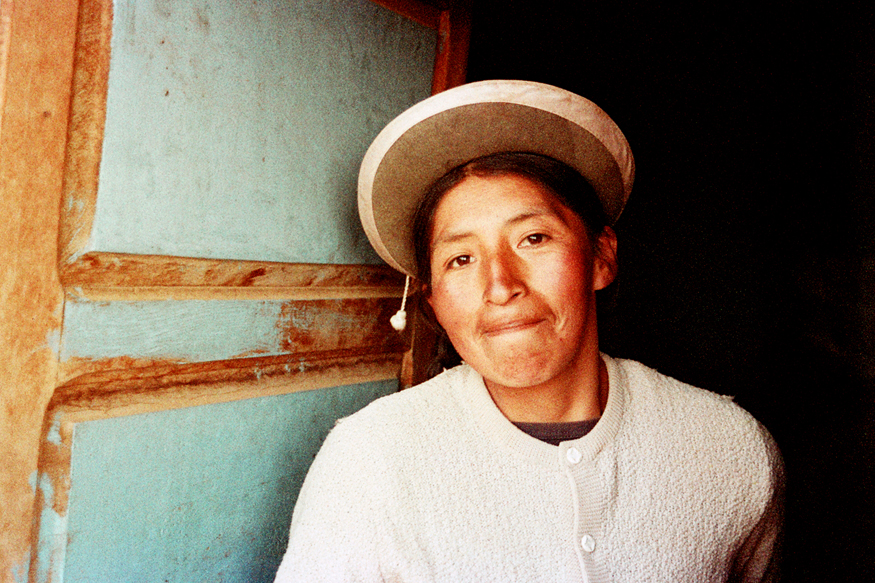
Cuba:
“How Castro Failed”, Commentary, November 1971. An expanded Spanish version published in the Jesuit magazine SIC, Caracas, September-October 1971. A 13,000-word essay attempting to reach some provisional conclusions about the Cuban Revolution.
“The Transformation of Politicial Culture in Cuba”, The New York Times Book Review, April 12, 1970. An appraisal of a new generation of Cuba books, “less polemicial than their predecessors and more factual”.
“Fidel Castro”, The New York Times Book Review, May 25, 1969. A review of the new biography by Herbert L. Matthews.
“Cuba Libre”, The New York Times Book Review, July 14, 1968. A review of Jose Yglesias’s book on life in a Cuban country town.
“Castro and the Church”, The New Leader, September 14, 1964. A detailed analysis of church-state relations in Communist Cuba.
Nine articles in The Washington Post, June-August, 1964, based on ten weeks travel in Cuba during that period.

Peru:
Peru’s Education Reform. Part I: More Schools. Part II: Escape from Poverty. Part III: Dialogue of the Deaf. Part IV: “A Social Democracy of Full Participation”, American Universities Field Staff Reports, 1974. A book-length study of Peru’s educational expansion in this century and its political and economic implications. Spanish version published in book form as La Reforma Educativa Peruana, Lima: Mosca Azul Editores, 1976.
“Peru: The Master is Dead”, Dissent, June, 1971. A 25,000-word essay on the Peruvian military regime and its revolutionary pretensions, based on seven months of travel in Peru during 1970, focusing mainly on agrarian reform.
“Peru Surveys Quake’s Devastation,” Newsday. Series of first-hand, detailed reports on earthquake damage in cities and towns of the coast and sierra of northern Peru. June 3-6, 1970.
“Perou sous le controle des Militaires: La reforme agraire est generee par l’absence d’une participation reale des travailleurs”, Le Monde, June 9, 1971.
“Peru’s Ambitious Land Reform Plan”, The Wall Street Journal, (editorial page), July 1971.
“For Peru a Turn Back to the U.S.”, The Wall Street Journal, (editorial page), June 26, 1970. An analysis of the reapproachment between Lima and Washington and of the social forces motivating and limiting the military regime.
“Soldier in a Hurry”, The Economist, June 6, 1970. Political analysis.
“Peru’s Misfired Guerrilla Campaign”, The Reporter, January 26, 1967, p. 36.
“Elusive Land Reform”, The Wall Street Journal, (editorial page), August 18, 1966. Detailed report on Peru’s new agrarian reform program.
“Squatters in their Jerusalem,” The Economist. July 2, 1966. An account of the development of urban land invasions by a reporter living in the new squatter community of 7 de Octubre, El Augustino, Lima.
“More law than land for Latins,” The Economist. June 4, 1966. A broad view of land reform problems in Latin America, focusing mainly on the controversy surrounding expropriation of the giant Algolan sheep ranch, near Cerro de Pasco, in the central Andes of Peru.
“With Mao in the Mountains”, The Economist, January 29, 1966. Profile of the Communist political machine at a provincial Peruvian university (Cuzco) in the educational explosion.
“Mao-type War in Andes”, The Observer, (London), January 16, 1966. A visit to the guerrilla zone in central Peru.
“A Red Insurgency Jolts Latin America”, The Wall Street Journal, (editorial page), November 8, 1965. New Communist guerrilla operations in the Andes, focusing on a visit to the jungle of eastern Peru.
“Letter from Peru”, Commentary, June 1964. An expanded Spanish version in Politica, No. 37, Caracas, January 1965. First detailed report on the peasant revolts in southern Peru.
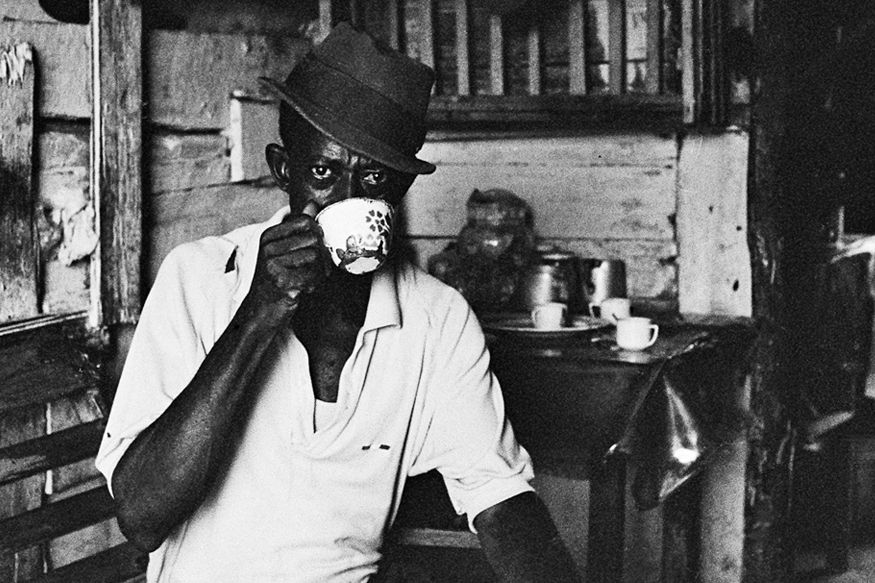
Domenican Republic:
“How Trujillo Died”, The New Republic, April 13, 1963. Reprinted by The New Republic on June 28, 1975. First disclosure of the CIA’s role in supplying weapons for the 1961 assassination of Dominican dictator Rafael Trujillo.
“Santo Domingo: The Politics of Terror”, The New York Review of Books, July 22, 1971. An account of the recent wave of political assassinations under the Balaguer regime and its social implications.
“The Only Logical Answer”, American Universities Field Staff Reports, Caribbean and Central America Series, Vol. VI, No. 1, 1971. A taped interview reconstruction of the kidnap-murder of a teenage Dominican boy who was shot by police, then kidnapped from his hospital bed and found dead the next morning, one of the more dramatic episodes of political terror in Santo Domingo. Told by his mother.
“Republique Dominicaine: La police protege les terroristes anticommunistes”, Le Monde, May 19, 1971.
“Republique Dominicaine: Le `boom’ et la terreur”, Le Monde, May 26, 1971. Reproduced in El Nacional, Caracas, May 31, 1971.
“Fun and Games for High Stakes”, The National Catholic Reporter, November 1, 1971. Reform and renewal of Catholicism in the Dominican Republic.
“Dominican Republic Weary but Uneasy”, The National Catholic Reporter, October 11, 1967.
“As Well As Could Be Expected”, The Economist, September 16, 1967. The first year of the Balguer regime in the Dominican Republic.
“Struggle In Santo Domingo”, The New Leader, January 2, 1967. Resurgence of violence and rehabilitation of key figures of the Trujillo dictatorship.
“Why Bosch Lost”, New Statesman, July 1, 1966.
“The Strange Dominican Election”, The New Leader, June 20, 1966. Evidence of fraud and coercion in Dominican elections.
“No Peace Yet”, The Economist, June 11, 1966. The 1966 Dominican election and its aftermath.
“War...and perhaps peace”, The Economist. June 26, 1965. Street fighting and the Bunker mission.
“U.S. Aids Confirm Imbert Aided Reds”, The Washington Post, June 17, 1965. These facts previously reported in The Nation, supra, October 26, 1963. Chief of “Loyalist” forces in 1965 civil war supplied arms and money to Castroite groups in 1962-1965.
“Dominican Republic Exchanges Its Alliance Hopes for Corruption”, and “Alliance Is Bogged Down in Dominican Ignorance”, The Washington Post, October 11-12, 1964. A two-part series on the Dominican Republic a year after the 1963 coup.
“Army Colonel Balk Produces Crisis in Dominican Republic,” The Washington Post. October 3, 1964.
“Catholics Foster Dominican Coops,” The Washington Post. October 1, 1964.
“Dominicans See Peril in New U.S. Sugar Tax,” The Washington Post. September 30, 1964.
“Widening Class Rift Perils Dominican Republic”, The Washington Post, May 7, 1964. A taxi strike, political disorder and hatred in the slums as precursors to the April 1965 Santo Domingo revolution.
“The Goons Again”, The Nation, February 17, 1964. Political chaos and police brutality following the 1963 military coup.
“Anatomy of a Coup: The Fall of Juan Bosch”, The Nation, October 26, 1963.
“Ferment in the Caribbean”, The New Leader, June 10, 1963. The Dominican-Haitian war scare and the erosion of Juan Bosch’s political support.
“Dominican Sources Deny Reds Taking Over”, The San Juan Star, August 1-2, 1963. A two-part series on the issue of Communism in the Dominican Republic prior to the overthrow of President Juan Bosch.
“Sugar Still Reigns,” The Baltimore Sun. Aug. 21, 1962. The new rulers in Santo Domingo seek new markets for their sugar in the collapse of world prices.
“Schools Oust Trujillo Image,” New York Herald Tribune. Nov. 2, 1961. Student demonstrations and strikes hasten dismantling of the Trujillo dictatorship as all portraits and statues of the slain dictator are removed from public buildings.
“Gen. Trujillo Willing to Cut Down Forces,” New York Herald Tribune. November 1961. Interview with the dead dictator’s son and heir.
“Trujillo’s Son Waiting Out O.A.S. Action on Sanctions,” New York Herald Tribune. Sunday Nov. 5, 1961.

Bolivia:
Bolivia: The Price of Tin. Part I: Patino Mines & Enterprises. Part II: The Crisis of Nationalization, American Universities Field Staff, West Coast South America Series, Vol. XXI, Nos. 1 & 2, 1974. A report on the economic and political development of the Siglo XX tin mine, the world’s greatest tin deposit and a cauldron of revolutionary politics. Parts I and II deal with the creation of an industrial infrastructure on the altiplano and then the regression to pre-industrial forms of labor.
“Bolivians Enraged by Expulsion of Clerics Who Urged Social Reform”, The Philadelphia Bulletin, September 28, 1970. The exiling of leftist priests which led to street riots and the fall of the Ovando regime.
“Slow Death in the Mines”, The New Leader, June 6, 1966. A life-study of a mining community 12 years after the revolution.
“Surgery in the Mines”, The Economist, April 2, 1966. After the battle.
“Bolivia’s Mines Yield Tin and Violence”, The Wall Street Journal (editorial page), January 12, 1966. The army’s battle with the miners and its economic causes.
“Go East, Young Man”, The Economist, November 13, 1965. Economic development of the Bolivian Oriente.
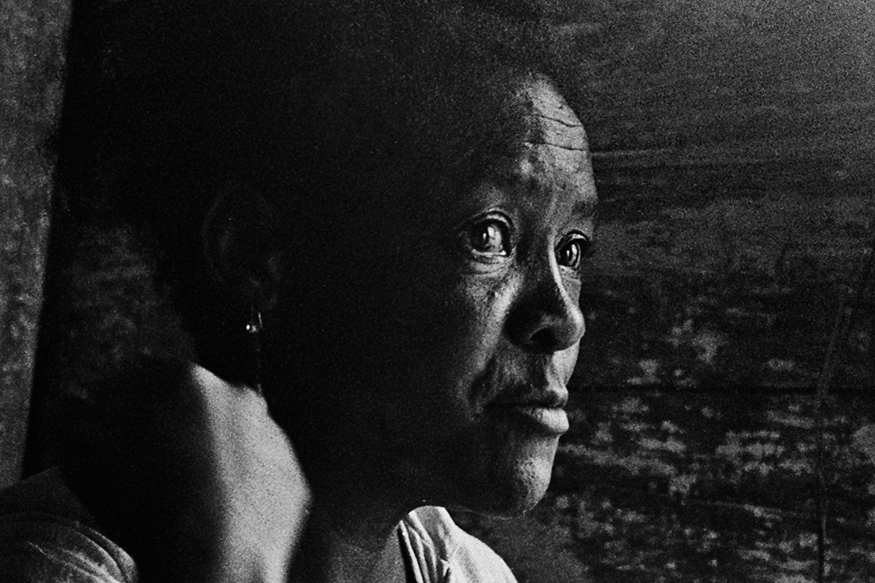
Guatemala:
“Slaughter in Guatemala”, The New York Review of Books, May 20, 1971. A detailed chronicle of the political terror in Guatemala.
“Guatemala Guerrillas Slaughtered”, The National Catholic Reporter, June 7, 1967; see also repartee June 28, 1967.
“Death in the Hills”, The Economist, June 10, 1967. Right-wing rural terrorism checks guerrilla insurgency.
“Rebels Deadlock Latin Army”, The Washington Post, (Outlook section), November 12, 1966. Interviews with Guatemala guerrillas and regular army units fighting them, based on seven weeks travel in Guatemala during the summer and fall of 1966.
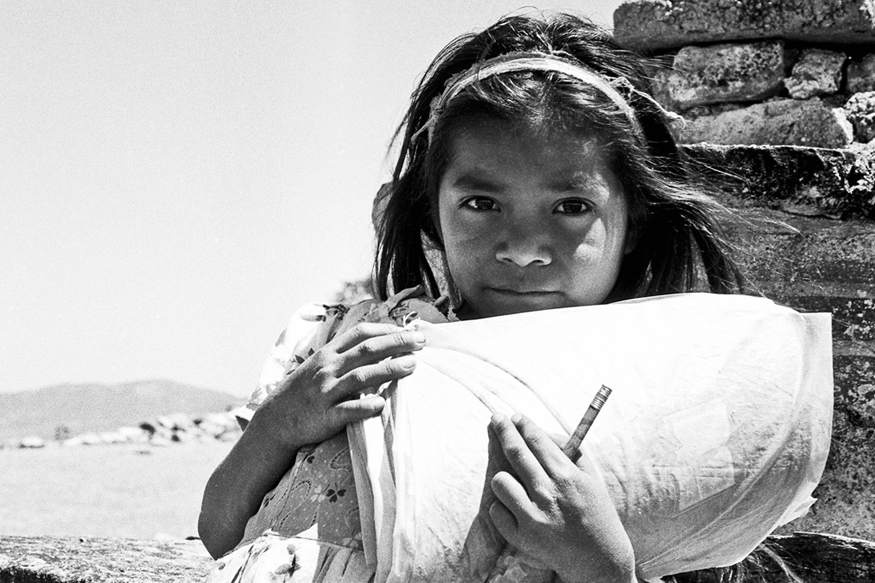
Haiti:
“I Am an Arm of Steel’: 45 Prisoners Killed in Haiti Purge”, The National Catholic Reporter, August 16, 1967. Terror and the Church of Haiti.
“When Gangsters Fall Out”, The Economist, August 5, 1967.
“More Blood Flows in Papa Doc’s Haiti”, The Toronto Star, July 4, 1967. A major purge of the army officer corps and the Presidential Guard.
“Duvalier’s Regime Keeps Haiti in Chaos”, The Washington Post, September 28, 1964. Political and financial operations of the dictator.
“Guerrillas Raise Hopes Against Duvalier”, The Washington Post, September 27, 1964. First Reports of a scorched earth repression of a Catholic-oriented Young Haiti guerrilla uprising Dictator Francois Duvalier.
“Duvalier Gets 2 T-28s from U.S. despite Ban,” The Washington Post. September 29, 1964.
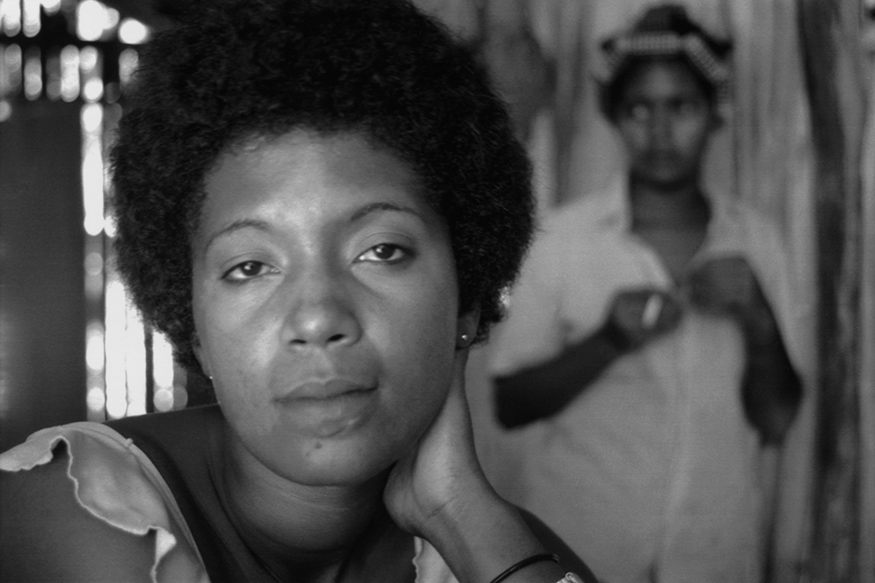
Nicaragua:
“The Somozas Keep the Lid on in Nicaragua”, The Toronto Star, December 10, 1966. Pre-election violence.
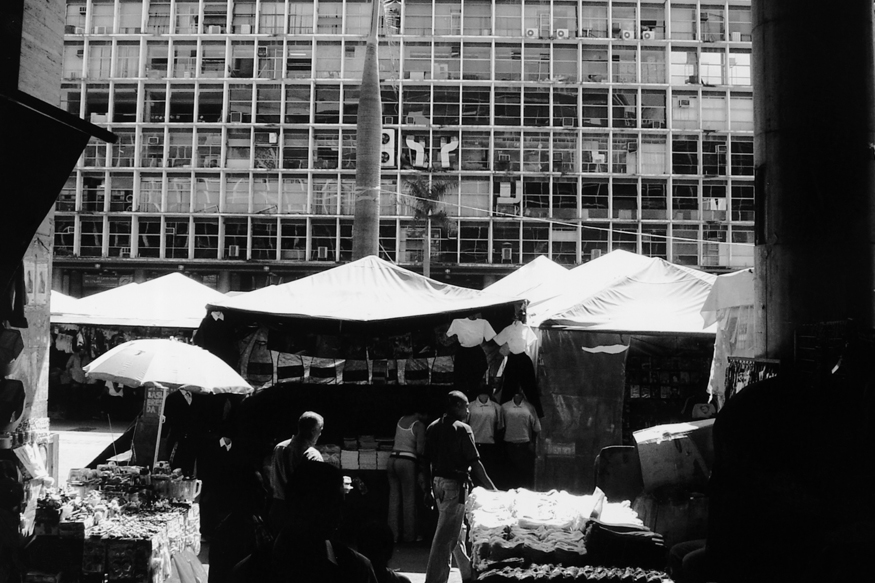
Colombia:
“The Death of Don Camilo”, Revista Caretas, (Lima), in Spanish, March 1966. Interview with Colombia’s rebel priest, Father Camilo Torres, shortly before his death in guerrilla combat, with observations on the radicalism in younger Catholic clergy in Latin America.
“Murders Yet to Come”, The Economist, August 28, 1965. Civil war flourished at scene of new Colombian guerrilla operations, a detailed study of the revolutionary potential of the municipality of San Vincente de Chucuri, Santander Department.
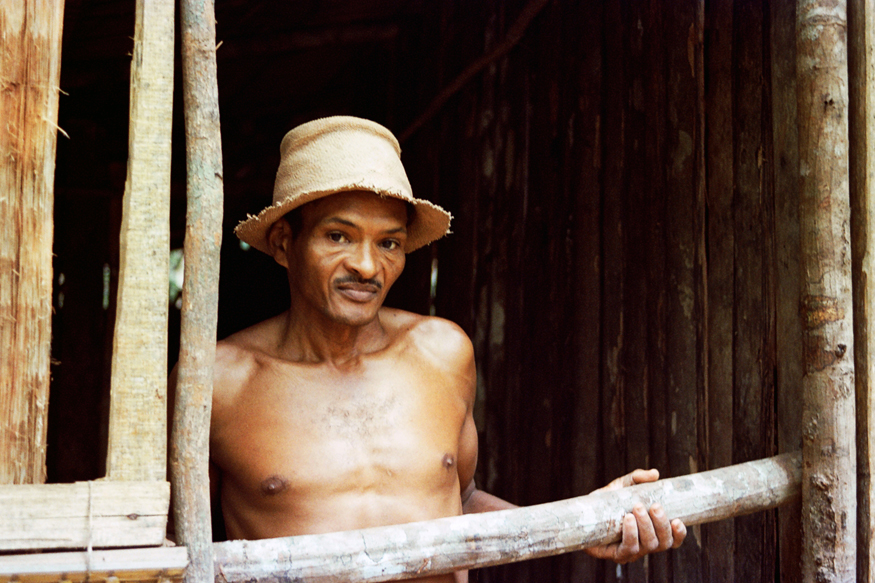
Puerto Rico:
“Where Progress Has Skirted By,” The San Juan Star. February 25, 1963. Report on the hard-core pockets of poverty in the mountainous interior of Puerto Rico, the “island within the island.”
“Up by the Bootstraps,” The San Juan Star. March 5, 1963. Small factories flourish around the mountain town of Aibonito.
“The Dock Hand,” The San Juan Star Sunday Magazine. September 22, 1963. Report on labor trouble and automation on the San Juan waterfront.
“Basic Education for Rural Puerto Ricans,” New York Herald Tribune. Dec. 25, 1960. A first trip to the island’s mountainous interior to see the work of the Commonwealth’s Division of Community Education.